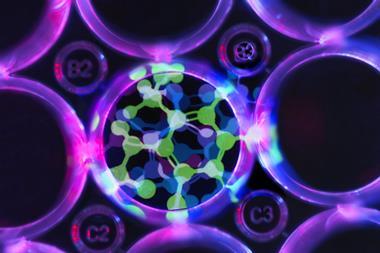A technique routinely used to analyse proteins has been found to be introducing artefacts. The scientists at UK drug giant AstraZeneca discovered that high performance liquid chromatography (HPLC) combined with UV and mass spectroscopy (MS), which is used to assess the purity of active drug compounds like proteins or oligonucleotides, was causing oxidation impurities.
‘We made the discovery when a protein we were analysing appeared to have high levels of oxidation impurities,’ says Fritz Schweikart, a research scientist at AstraZeneca. ‘After investigating it, it turned out to be a result of the UV detectors.’
HPLC–UV–MS can record the amount of a compound by measuring its absorption of UV light, while the structural characterisation is determined by mass spectroscopy. However, Schweikart’s investigation shows that modern UV detection technology can be a source of severe oxidation artefacts.
Sabeth Verpoorte, professor of pharmaceutical analysis at the Groningen Research Institute of Pharmacy in the Netherlands, says this is an important finding because, ‘the oxidation effects are occurring in protein and peptide samples – the types of samples MS is often used for’. She adds that researchers still need to be aware of the underlying principles behind measurements – ‘we are not at the point where we can consider these instruments as black boxes’.
Schweikart’s work shows that compounds susceptible to UV degradation decompose at high concentrations when using this technique, while compounds stable in UV light, but sensitive to free radical-induced degradation are also affected. This latter group includes peptides, proteins, oligonucleotides and small molecules and ‘was the great[est] surprise for us, as degradation from free radicals in the mobile phase formed in the UV detector has never been described or warned for earlier,’ Schweikart explains.
Researchers using HPLC–UV–MS need to be aware of oxidation effects and re-run samples with the UV lamp switched off if impurities are observed Schweikart warns. He also suggests connecting the UV and mass spectroscopy in parallel rather than in series.
While these results are important they don’t cast serious doubts on the reliability of the technique. For Verpoorte, ‘researchers that use this technology might gain extra insight for interpreting results they did not previously have a good explanation for’.
Schweikart thinks that their discovery is an opportunity. ‘We see this as a new exciting possibility to study radical chemistry,’ he says. ‘As long as the MS community is aware of the effect, it is just another option to play with.’
References
F Schweikart and G Hulthe, Anal. Chem., 2019, DOI: 10.1021/acs.analchem.8b05845












No comments yet